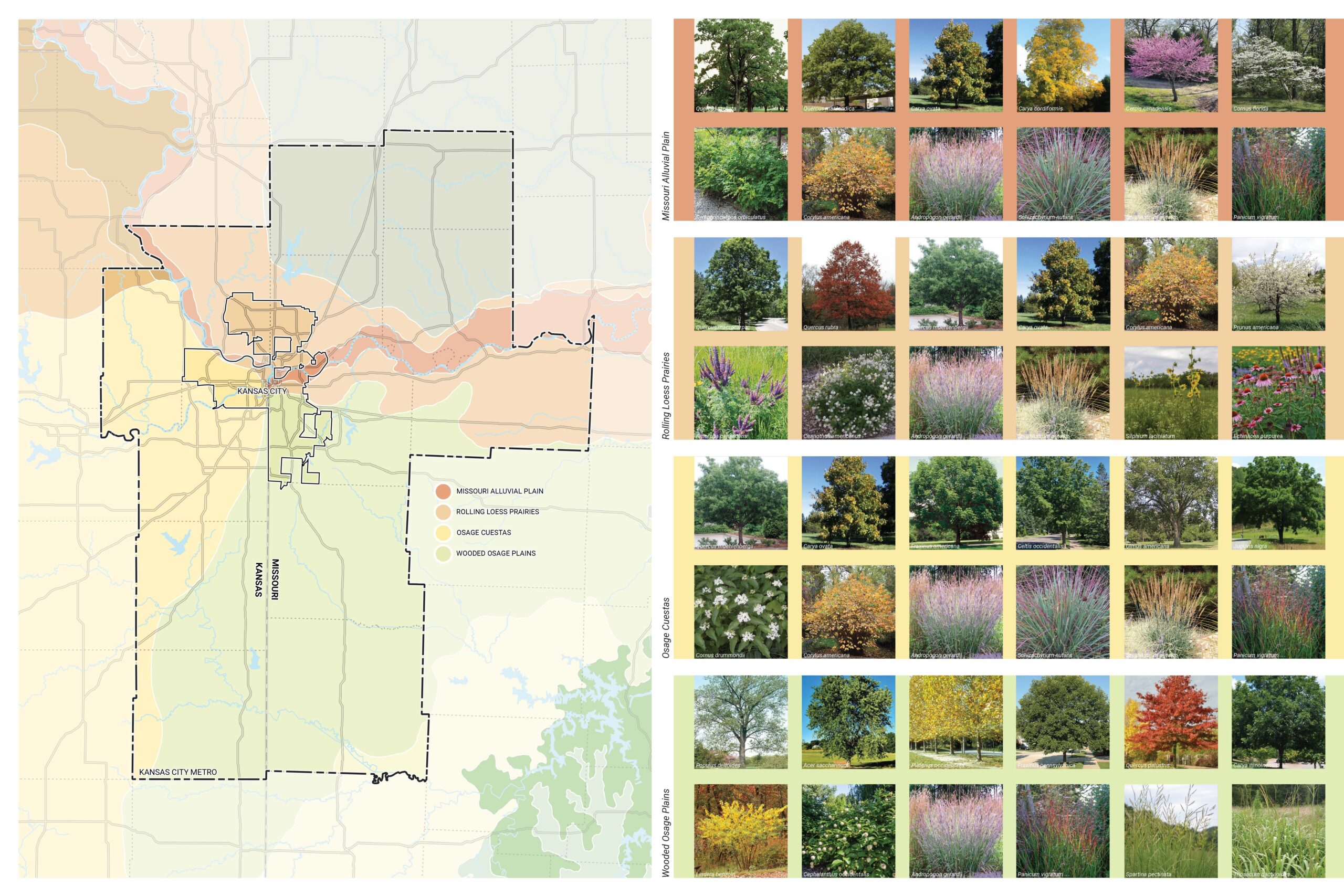Understanding the Bigger Picture
One important aspect of landscape architecture is looking at the big picture. In Kansas City, not only does the city straddle two borders, it also sits at the convergence of four different ecoregions: the Wooded Osage Plains, Rolling Loess Prairies, Missouri Alluvial Plain, and Osage Cuestas. These ecoregions contribute to the area’s diverse topography, vegetation, and ecological features, influencing both natural systems and site-specific conditions.
Looking at these ecoregions allows us to understand our ecological context more deeply, which helps communities thrive by reconnecting them to their local ecosystems. When we design with native plants and natural patterns specific to these ecoregions, we create spaces that are more resilient, sustainable, and connected to the land’s true character.
This regional approach means communities benefit from lower maintenance costs, improved stormwater management, increased biodiversity, and spaces that reflect their unique ecological heritage. By honoring these natural systems, we’re creating beautiful landscapes and fostering healthier environments where both people and nature can flourish together.

